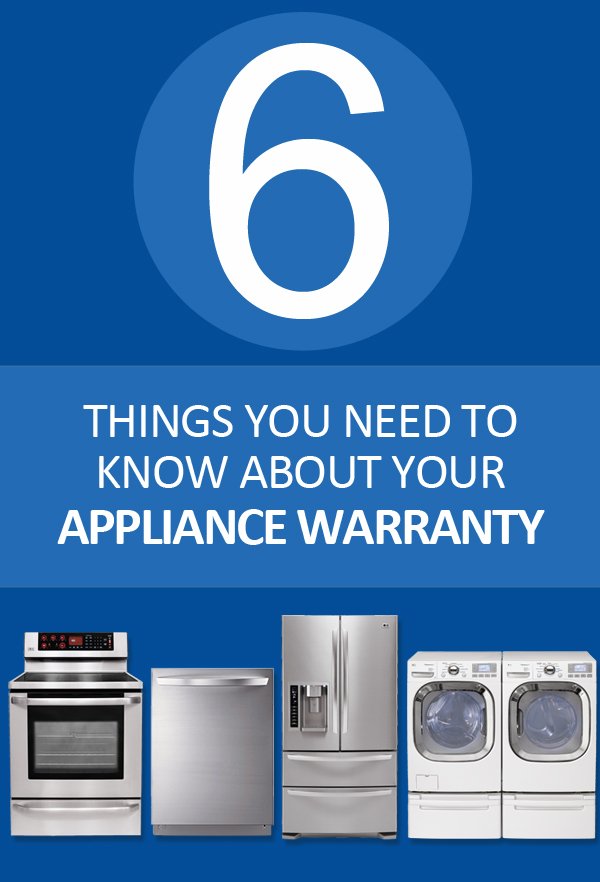
Here’s the thing: GE kitchen appliances come with solid warranties, but they’re not bullet-proof. There are a few easy-to-miss mistakes that can wipe out your coverage before you even need it. Honestly, it’s a bit like owning a new car—you wouldn’t want to do your own engine repairs and find out later you’re on the hook for the costs. So, let’s break down how to avoid voiding your GE appliance warranty—one smart step at a time.
Read Your GE Appliance Warranty—Don’t Just Toss the Manual
You might be tempted to slide the manual into a dusty drawer, but that little booklet (or PDF) is your warranty’s rule book. Every GE appliance comes with a warranty—usually covering defects in materials or workmanship for a set time, like 1–2 years. But here’s where people slip up: the manual spells out what you can—and can’t—do.
GE’s warranty language can be dense, but it’s worth a careful read. You’ll learn things like:
- What’s covered (common repairs, faulty parts)
- What’s excluded (normal wear, accidental damage, misuse)
- Which actions or modifications will void the warranty
Maybe you skip straight to the troubleshooting section or look up how to reset or sync your appliance. That’s fine, but don’t miss the “Exclusions” or “Owner’s Responsibilities” pages. Let me explain: sometimes, just using unapproved cleaning methods can be enough to lose coverage. If your GE remote control for a smart oven stops syncing due to a software update you tried yourself, you might be out of luck.
When in doubt, check your warranty. “I didn’t know” isn’t a magic fix if you need a major repair later.
Always Use Authorized GE Parts and Service Providers
It’s tempting to save money by calling a local repair guy or ordering generic parts online, but that can backfire fast. Only GE-approved technicians and genuine parts keep your warranty valid. If you let a non-authorized person tinker with your appliance—or install a knockoff part—you’re taking a risk.
Here’s why it matters:
- Authorized techs know GE’s troubleshooting codes and repair protocols
- They use correct reset, sync, and pairing processes for smart appliances
- They document work, which GE might ask for if you file a claim
You might be wondering, “But what if it’s just a quick battery swap or filter change?” Regular maintenance tasks are fine for owners, but anything more technical—like an error code that won’t clear or a remote sync that keeps failing—should be left to the pros. Otherwise, you risk voiding your GE kitchen appliance warranty, even if your intentions are good.
Avoid DIY Modifications or Installations
We’ve all watched a YouTube video and thought, “How hard can it be to install a new dishwasher?” Honestly, GE’s warranty is clear: self-installation or unauthorized modifications can void coverage faster than you think.
Let’s say you try to wire your new GE oven or add a “universal” wifi remote that’s not on GE’s approved accessory list. If something goes wrong—maybe the oven won’t pair with the remote, or an error code pops up—you’re now responsible for the repair. Even a small change to software or hardware can trip up the internal troubleshooting systems GE uses to check warranty claims.
Here’s a tiny story: I once knew someone who tried to bypass a broken door sensor on their GE fridge using a clever magnet trick. Sure, the “fix” worked—until the compressor burned out, and GE declined the warranty repair because of the homemade hack. So, stick with the installation and setup instructions, and call in the experts for anything tricky.
Don’t Ignore Routine Maintenance Tasks
You might think a warranty covers everything, but here’s the catch: neglecting basic maintenance can void your coverage. GE expects owners to replace water filters, clean vents, empty drip trays, and update smart appliance software as outlined in the manual.
Picture this: You forget to clean out your range hood filter, and one day, the whole fan motor seizes up. GE could easily point to “lack of required maintenance” as the reason your warranty claim is denied. The same thing goes for skipping recommended battery replacements in a remote control or ignoring recurring troubleshooting alerts that tell you to reset or sync a component.
- Set reminders for filter and battery swaps
- Keep a simple log of cleaning and updates
- Follow the maintenance steps in your GE manual exactly
If you call for help, having proof that you stayed on top of maintenance gives you leverage—and peace of mind.
Keep Proof of Purchase and Service Records
This part is simple but crucial: GE will ask for proof of purchase and service records if you make a warranty claim. Lost your receipt? That could be the end of your coverage.
You might be thinking, “It’s just a dishwasher, do I really need to keep paperwork?” But when troubleshooting a weird code or a pairing issue with your appliance’s remote, GE may also want to see that you used authorized service.
Best practices:
- Scan or photograph your original purchase bill
- Save all repair and maintenance invoices
- Keep a digital folder, just in case you need to email them quickly
If you ever have to reset your appliance, sync a new remote, or explain a recurring issue, these records can make the entire process smoother—and help prove you didn’t void your GE kitchen appliance warranty by accident.
Stick to GE-Approved Accessories and Add-Ons
It’s easy to be tempted by cool new gadgets, especially universal remotes, LED retrofits, or “smart” add-ons from third parties. But GE’s warranty only covers their own—or explicitly approved—accessories.
Why does this matter? If you try to pair an off-brand remote and it fries the control board, your warranty may disappear in a puff of smoke. GE designs their kitchen appliances, remotes, and accessories to work—and code—together. Introducing outside parts makes troubleshooting impossible for their techs and can make even a simple reset or sync process go haywire.
- Always check GE’s accessory list or website before buying extras
- Follow pairing and installation guides carefully
- If you want a universal remote, make sure it’s officially supported
When in doubt, stick to original GE products. The extra few dollars can save you hundreds (or more) if something ever goes wrong.
Take Care When Moving or Relocating Appliances
Sometimes you need to move your appliance—maybe you’re renovating, or just rearranging the kitchen. Here’s where people get tripped up: unprofessional moving can break or damage parts, and that’ll void your warranty.
Let’s say you haul your GE refrigerator into a moving truck yourself, skip the transit bolts, and the compressor gets damaged. GE will almost always deny repairs on something caused by “improper handling” or “installation error.” Even a simple drop can mess up sensitive electronics, especially in newer smart appliances with remote pairing or code-based access.
So, if you need to move a large GE appliance:
- Use professional movers or installers
- Follow GE’s moving and reinstallation instructions
- Don’t attempt DIY pairing or troubleshooting while reconnecting
If you’re not sure, call GE customer support. They can walk you through safe steps, and it shows you took responsible action—always a bonus if you ever need a warranty repair.
Contact GE Support for Tech Issues—Don’t Try to Hack Your Way Out
With smart kitchen appliances, it’s tempting to find quick fixes online when something glitches. Maybe the remote won’t pair, or the oven won’t reset after a power outage. But unauthorized troubleshooting, hacking, or software resets can leave your warranty dead in the water.
You might stumble across a “secret code” on a forum that claims to unlock advanced settings or bypass a battery warning. Honestly, that’s a risky move. If you mess up the firmware or damage the software, GE can see those changes during diagnostics—and decline your warranty claim.
Instead:
- Call GE support, describe your issue, and follow their official troubleshooting steps
- If instructed to reset or pair a device, document what you did
- Never install unofficial software updates, codes, or third-party troubleshooting tools
If it’s something simple—like changing a battery or re-syncing a remote—you’re usually safe. But when in doubt, let the pros handle it. Your warranty (and your future repair bill) will thank you.
Closing Thoughts: Protecting Your Peace of Mind—and Your GE Warranty
Staying on the safe side with your GE kitchen appliances warranty isn’t just about following rules—it’s about protecting your investment and making sure you’re covered when it counts. Honestly, a little extra care up front saves a lot of pain if a code error, sync fail, or remote pairing issue ever leaves your gadget on the fritz.
So, read those manuals, use authorized pros, document your purchases, and don’t get too clever with hacks or off-brand accessories. Treat your GE appliance warranty like a free safety net: don’t poke holes in it without meaning to. That way, if the unexpected happens, you’re ready—with your peace of mind and your coverage perfectly intact.
